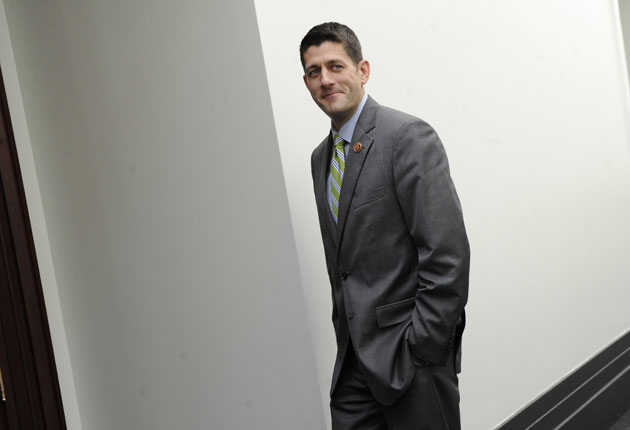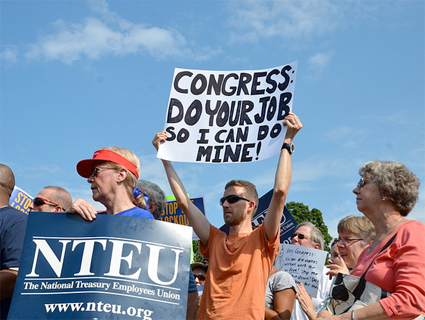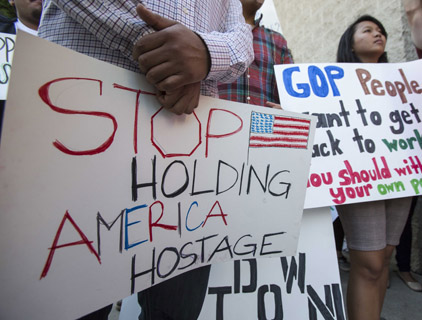
Fort Worth Star-Telegram/ZUMA
October’s tea party-inspired government shutdown was awful for big businesses. The anti-Obamacare crusade led by Sen. Ted Cruz (R-Texas) and House tea partiers kept the government closed for 16 days and won zero policy victories for the GOP, but their showboating robbed billions from the economy. Because of the shutdown, Standard & Poor’s revised its economic growth projections for the last quarter of 2013 downward from 3 percent to 2.4. percent. The harm to the economy would have gone from unpleasant to catastrophic if Cruz and his partners in crime had their way and let the government hit the debt ceiling.
Throughout the shutdown, corporations begged the Republicans to step back from the ledge and keep the government funded. Their protestations fell on the deaf ears of new members of Congress who feel less beholden to corporate donors than past generations of Republicans. For a moment after the shutdown was resolved, it seemed like big business finally had enough with the GOP’s hardliners. Moderate GOP candidates jumped into primary challenges against tea partiers with the blessing of corporate donors immediately after the shutdown.
The dissatisfaction of Big Business didn’t last all that long. Reuters analyzed donations from the biggest business political action committees and found that they are still funneling money to the Tea Partiers who wanted the government to crash and burn last month. Since Congress voted to re-open the government on October 16, the eight biggest corporate PACs have donated nearly $85,000 to the 162 Republicans who voted against the deal to raise the debt ceiling and end the shutdown. For context, those same PACs have also given $246,000 to the 366 members of Congress who voted for the deal. Reuters found that some companies, such as Honeywell, were still donating to hardline Republicans even while they were railing against the government shutdown.
Even if corporate America despise the tea partier’s methods, it turns out business still cares more about lower marginal tax rates and lax regulation than a functioning government.

















